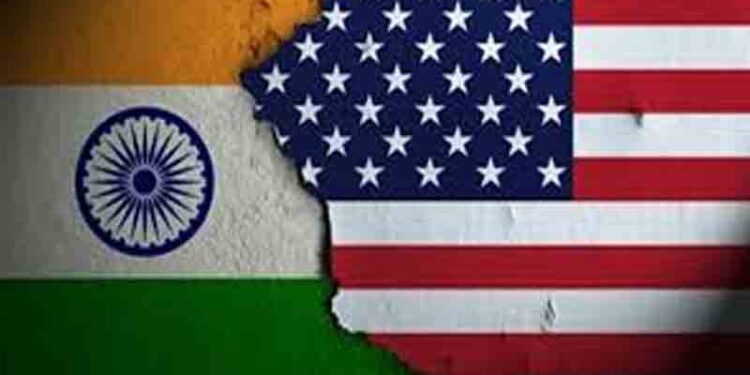Washington’s Strategic Move in the Indo-Pacific Region
In a significant development that underscores the growing defense cooperation between the United States and India, the US government has formally approved the sale of advanced maritime surveillance equipment to New Delhi. The agreement, valued at over $130 million, is aimed at boosting India’s naval surveillance capabilities and enhancing the interoperability of both nations’ maritime forces in the increasingly contested Indo-Pacific region.
Deal Details and Official Confirmation
According to an official statement from the US State Department, the sale includes sophisticated maritime domain awareness (MDA) systems that will enable India to better monitor its vast maritime borders. The Defense Security Cooperation Agency (DSCA), which oversees foreign military sales, has notified the US Congress of the deal, marking the completion of a critical step in the approval process.
The statement highlights that the proposed deal will support the foreign policy and national security objectives of the United States by strengthening a key strategic partner in South Asia. It further emphasizes that the transfer of this technology will not disrupt the military balance in the region.
Purpose and Strategic Importance of the Sale
The maritime surveillance equipment being sold to India is expected to significantly enhance the Indian Navy’s ability to monitor and track movements in the Indian Ocean and beyond. As global powers vie for influence in this strategic region, ensuring uninterrupted maritime operations and freedom of navigation has become a shared concern.
India, which has a coastline of over 7,500 kilometers and a maritime jurisdiction that stretches across more than 2 million square kilometers, has been actively working to modernize its naval forces. The inclusion of cutting-edge US technology will augment India’s existing surveillance capabilities and help it better respond to regional challenges including piracy, illegal fishing, smuggling, and potential military threats.
India-US Defense Ties: A Growing Partnership
This latest approval is part of a broader trend in expanding defense ties between Washington and New Delhi. Over the past decade, the two countries have signed a number of key defense agreements, including:
- LEMOA (Logistics Exchange Memorandum of Agreement): Allows mutual use of military bases for logistics and support.
- COMCASA (Communications Compatibility and Security Agreement): Facilitates secure communication interoperability.
- BECA (Basic Exchange and Cooperation Agreement): Enables sharing of geospatial intelligence.
These agreements have paved the way for increased bilateral military exercises, joint naval patrols, and information-sharing mechanisms, making India a cornerstone of the US’s Indo-Pacific strategy.
Impact on Regional Security Dynamics
While the United States maintains that the sale is in line with its objective of fostering stability and cooperation in South Asia, the development is likely to raise concerns among regional rivals, particularly Pakistan and China.
Pakistan, which shares a tense relationship with India, may view this move as part of a broader effort to tilt the regional power balance. Analysts suggest that such sales could intensify the arms race in South Asia, as neighboring countries may seek to bolster their own defense capabilities in response.
China, which has growing naval ambitions in the Indian Ocean Region (IOR), may also interpret the sale as a strategic alignment between the US and India aimed at containing its influence. The Indian Ocean has become a focal point for strategic competition, with the US, India, China, and other regional players seeking to assert their presence.
Reactions from Strategic and Defense Experts
Defense analysts in both countries have highlighted the importance of the deal. American security experts argue that empowering India with maritime surveillance tools aligns with Washington’s goal of ensuring a “free and open Indo-Pacific.” Indian defense commentators see the sale as a testament to New Delhi’s rising stature as a reliable partner in global maritime security.
“This deal reflects the convergence of Indo-US interests in maritime security. With threats like undersea intrusions and transnational crime on the rise, real-time situational awareness is crucial,” said an Indian naval expert.
Congressional Review and Legal Formalities
As per US law, all foreign military sales above a certain value threshold must be reported to Congress. The DSCA’s formal notification ensures transparency and allows lawmakers to raise any objections. Unless Congress blocks the sale within a set period, it is expected to move forward without major hurdles.
The DSCA clarified that the sale would include not just hardware but also training, technical documentation, and support services to ensure seamless integration with India’s existing naval infrastructure.
A Message to the Indo-Pacific Region
The approval sends a strong message about Washington’s commitment to its allies and its intention to counterbalance China’s maritime expansion. By supporting India’s maritime capabilities, the US aims to build a regional security architecture capable of deterring aggression and ensuring peace and stability.
Conclusion: Strengthening Strategic Maritime Partnerships
The $130 million maritime surveillance equipment sale is more than a simple arms deal; it reflects the deepening strategic relationship between the United States and India. As both countries confront common security challenges in the Indo-Pacific, enhanced defense cooperation and technology sharing are poised to play a pivotal role.
This move underscores the US’s confidence in India as a key player in maintaining regional security and its broader commitment to safeguarding international waters from emerging threats. While the deal may provoke strategic recalibrations from rival nations, it stands as a milestone in Indo-US relations and a cornerstone of future regional maritime collaboration.

























